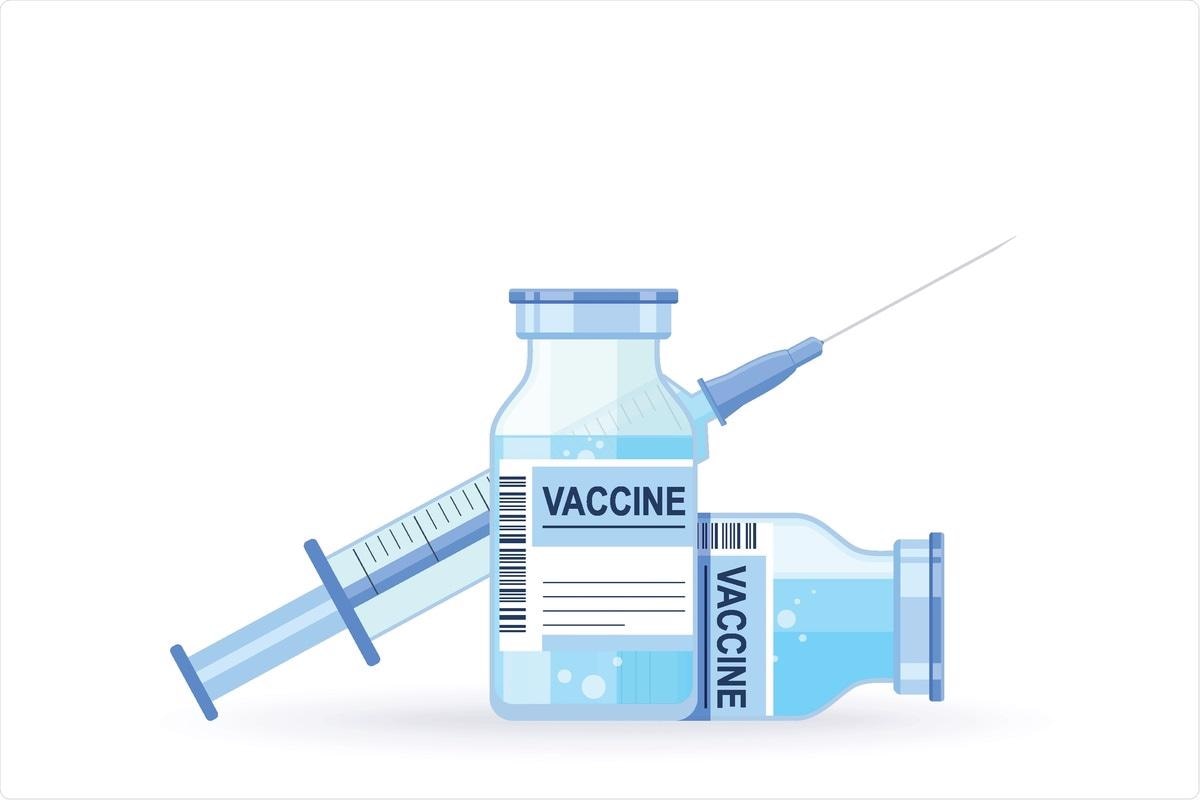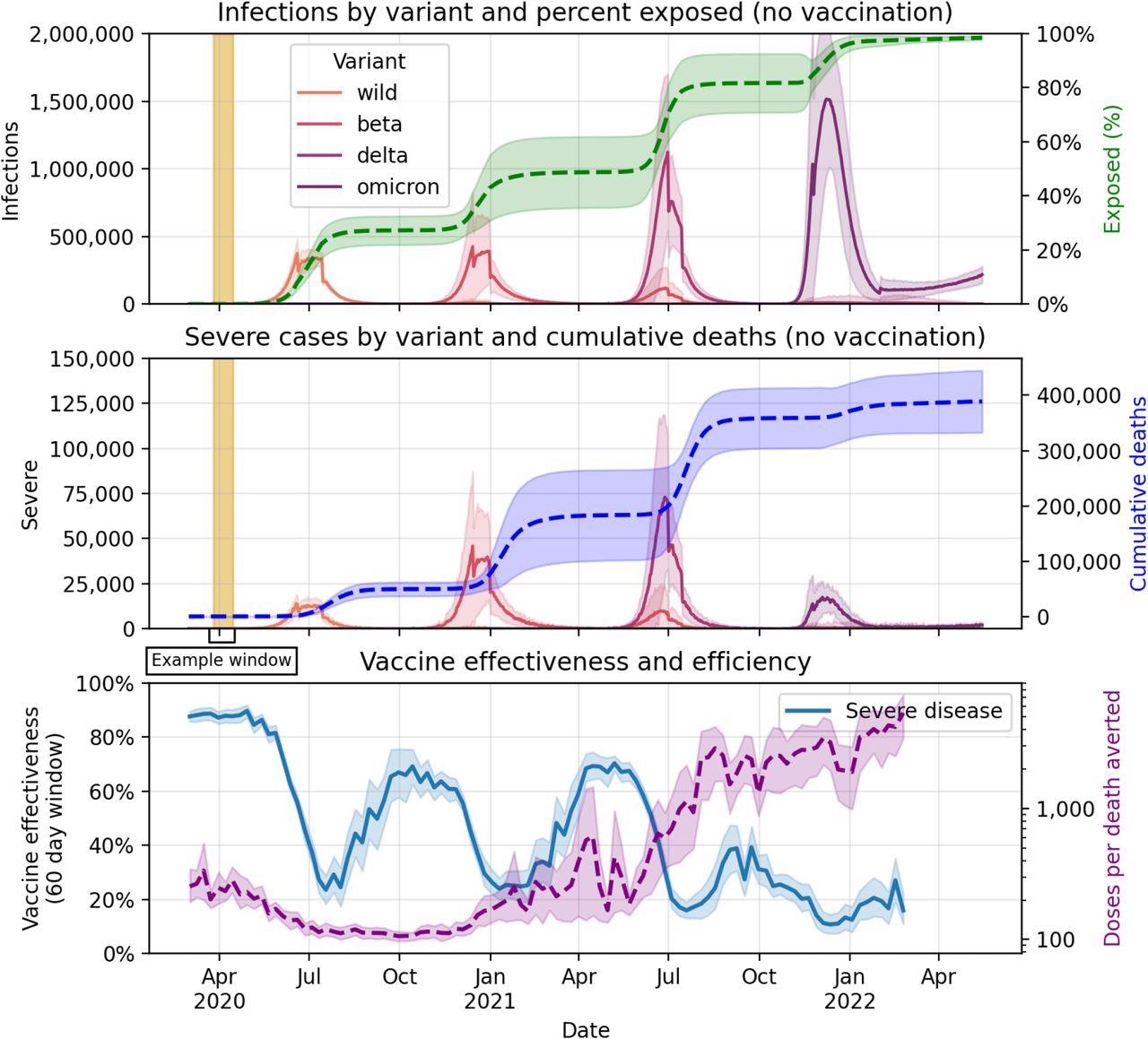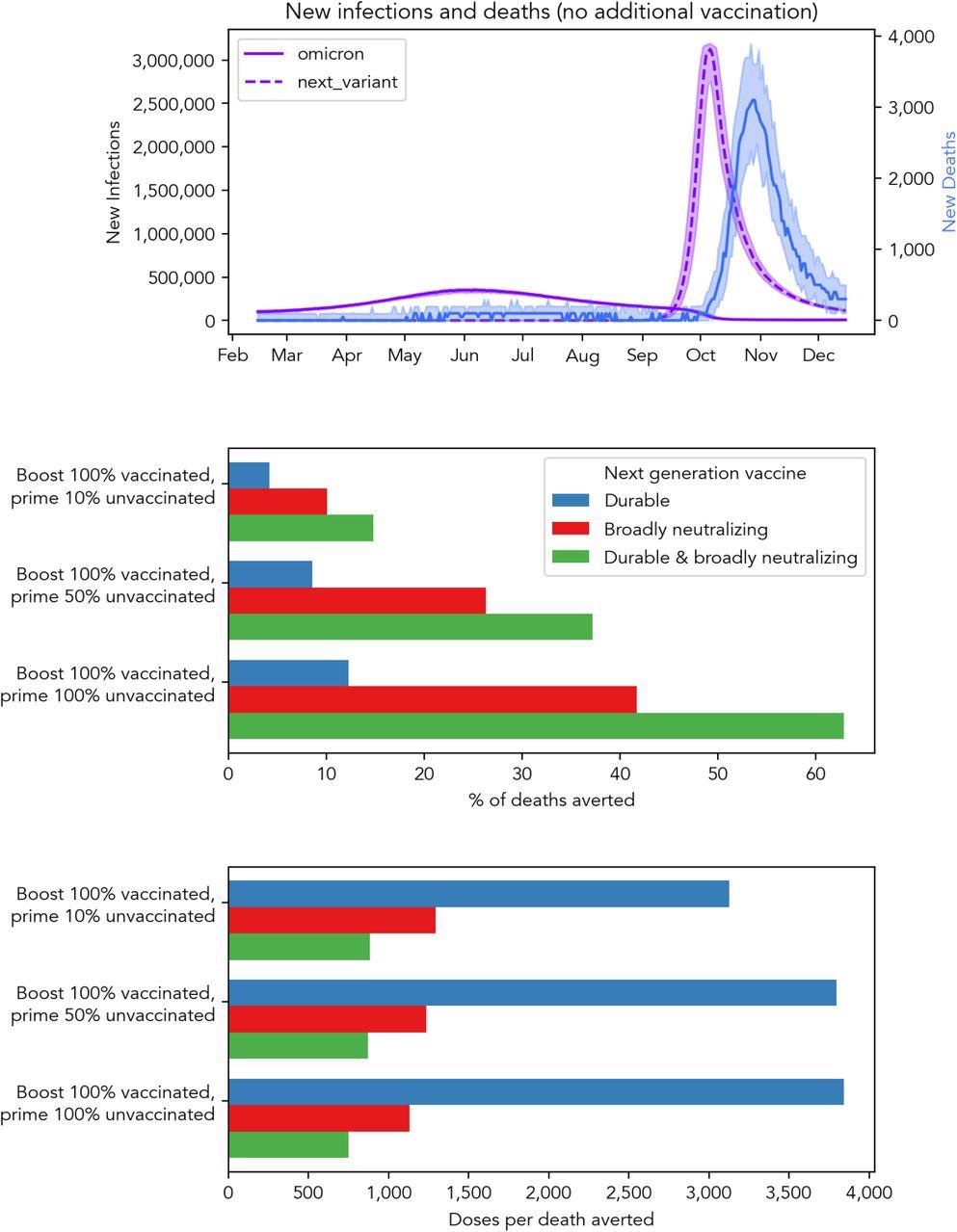The coronavirus disease 2019 (COVID-19) pandemic caused by severe acute respiratory syndrome coronavirus 2 (SARS-CoV-2) led to the fastest vaccine development timeline in history. In fact, several highly efficacious vaccines were developed against SARS-CoV-2 within 11 months for the public.
Clinical trials have indicated that most of the current COVID-19 vaccines can reduce the risk of SARS-CoV-2 infection. However, due to the changing immunity of the global population due to SARS-CoV-2 infection and/or vaccination, combined with the evolution of the virus, the efficacy of current COVID-19 vaccines continues to fluctuate.

Study: The changing impact of vaccines in the COVID-19 pandemic. Image Credit: Ramcreative / Shutterstock.com

 This news article was a review of a preliminary scientific report that had not undergone peer-review at the time of publication. Since its initial publication, the scientific report has now been peer reviewed and accepted for publication in a Scientific Journal. Links to the preliminary and peer-reviewed reports are available in the Sources section at the bottom of this article. View Sources
This news article was a review of a preliminary scientific report that had not undergone peer-review at the time of publication. Since its initial publication, the scientific report has now been peer reviewed and accepted for publication in a Scientific Journal. Links to the preliminary and peer-reviewed reports are available in the Sources section at the bottom of this article. View Sources
Background
Most of the currently approved COVID-19 vaccines target the SARS-CoV-2 spike protein and lead to the production of neutralizing antibodies, as well as CD4+ and CD8+ T-cells. However, neutralizing antibodies wane over time, thereby reducing vaccine effectiveness against infection. Severe disease protection is more durable, as the disease course of COVID-19 is more amenable to the response time of memory B- and T-cells.
Waning immunity, along with the emergence of immune-evading variants, has led many jurisdictions across the world to deliver booster vaccines. Scientists are also working to develop variant-targeted vaccines that can maximize vaccine effectiveness against immune-evading variants. Additionally, antiviral pills such as Molnupiravir and Paxlovid have shown efficacy against severe infection if taken shortly after the onset of symptoms.
A new study published on the preprint server medRxiv* explores the changing value of COVID-19 vaccines in a scenario of dynamic immunity and rapidly evolving variants of concern (VOCs).
About the study
The current study involved Covasim, which is an open-source agent-based model that was developed by the Institute for Disease Modeling. Covasim can track viral transmission and progression over time, along with the effects of interventions. The researchers also model age demographics, contact network patterns, population size, and historical immunity in a South African-like setting.

Population-level vaccine effectiveness as a function of time. The top two panels show new infections and new severe cases by variant, percent of the population with prior infection, and cumulative deaths in the absence of vaccination. The last panel shows vaccine effectiveness against severe disease over time, which is calculated for the 60 days following vaccine completion (i.e., after the second dose) and doses per death averted over time, which is calculated for the cumulative deaths following each vaccine day for the remainder of the simulated period. The golden rectangle represents an example vaccine effectiveness window. Simulations are for a South Africa-like population of 54 million people.
Data on hospitalizations, deaths, cases, and seroprevalence was collected to determine the likely dates of introduction of the different variants and background immunity at that time. The transmission probabilities were modeled before and after the four COVID-19 waves in South Africa to represent changes in non-pharmaceutical interventions.
Vaccine efficacy against symptomatic infection, severe disease, and infection was calculated over 60-days following the second vaccine dose, in addition to assessing the impact of the vaccine on new variants. A trade-off between primary series and booster dose coverage, as well as the timing of a variant-chasing vaccine strategy, were evaluated. Finally, the researchers also determined the impact of next-generation vaccines.

Health impact and efficiency of next-generation vaccines that are more durable and/or more broadly neutralizing. The top panel shows infections and deaths in the absence of additional vaccination. The bottom two panels show the percentage of deaths averted and doses per death averted associated with combinations of next-generation vaccines and different levels of target coverage among vaccinated and unvaccinated individuals. Vaccination in these scenarios starts on February 15, 2022, and would take 90 days to reach target coverage levels.
Study findings
Vaccine effectiveness was found to peak in the months before an emerging wave, following which it declines. In fact, vaccine effectiveness was found to be highest at the beginning of the pandemic and declined as the percentage of the population with immunity from prior infection increased.
Vaccine effectiveness was also found to increase in advance of a more virulent strain. Furthermore, the efficacy of vaccines as doses per death averted was found to decrease over time.
The researchers also suggest that a variant that emerges from a recent variant, such as Omicron, would directly compete with the second wave of the Omicron variant. However, the date of the introduction would have a high impact on the epidemic dynamics. Comparatively, a SARS-CoV-2 variant that emerges from a new or ancestral cluster would have a larger growth and be less sensitive to the time of introduction.
An increase in the primary series coverage was proposed to have a greater marginal and absolute health impact as compared to an increase in booster coverage. An increase in primary dose coverage has also been found to be more valuable in terms of the percentage of deaths averted as compared to booster dose coverage.
A variant-chasing strategy can help prevent more deaths as compared to current vaccines until 20 days of the introduction of a new variant into the population. The efficacy and efficiency of this strategy were observed to decline if it takes longer to deploy a variant-specific vaccine following its introduction. For the development of next-generation vaccines, the breadth and durability of the vaccine must be considered over the timing of delivery to achieve significant protection against immune-evading variants.
Conclusions
The current study suggests that the population immunity that has been acquired during the first two years of the COVID-19 pandemic impacts future vaccinations. The timing of delivery, increase in primary dose coverage, as well as a rise in breath and durability, have can impact the efficacy of vaccines against the new variants.
The researchers also conclude that the development of next-generation vaccines must be achieved in order to provide additional protection against immune-evading SARS-CoV-2 variants. Finally, a layered approach to respiratory disease transmission and the social conditions that can worsen it is required to mitigate the current pandemic and prevent the next.
Limitations
Co-morbidities or other factors such as immuno-suppression were not characterized at the individual level in the current model. Additionally, new birth cohorts are not captured in the current model. A third and final limitation of the current study was that the researchers did not consider the process of affinity maturation of antibodies, which may lead to underestimation of protection over time.

 This news article was a review of a preliminary scientific report that had not undergone peer-review at the time of publication. Since its initial publication, the scientific report has now been peer reviewed and accepted for publication in a Scientific Journal. Links to the preliminary and peer-reviewed reports are available in the Sources section at the bottom of this article. View Sources
This news article was a review of a preliminary scientific report that had not undergone peer-review at the time of publication. Since its initial publication, the scientific report has now been peer reviewed and accepted for publication in a Scientific Journal. Links to the preliminary and peer-reviewed reports are available in the Sources section at the bottom of this article. View Sources
Journal references:
- Preliminary scientific report.
Cohen, J. A., Stuart, R. M., Panovska-Griffiths, J., et al. (2022). The changing impact of vaccines in the COVID-19 pandemic. medRxiv. doi:10.1101/2022.03.10.22272222. https://www.medrxiv.org/content/10.1101/2022.03.10.22272222v1.
- Peer reviewed and published scientific report.
Cohen, Jamie A., Robyn M. Stuart, Jasmina Panovska-Griffiths, Edinah Mudimu, Romesh G. Abeysuriya, Cliff C. Kerr, Michael Famulare, and Daniel J. Klein. 2023. “The Changing Health Impact of Vaccines in the COVID-19 Pandemic: A Modeling Study.” Cell Reports 42 (4): 112308. https://doi.org/10.1016/j.celrep.2023.112308. https://linkinghub.elsevier.com/retrieve/pii/S2211124723003194.